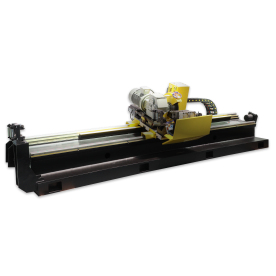[High-Impedance Impedor]Understanding High-Impedance Impedors: Their Role and Importance in Electrical and Electronic Circuits
News 2025-1-4
****In the field of electronics, understanding various components and their behavior is crucial for building efficient and reliable systems. Among the various components, high-impedance impedors play a significant role in circuit design and operation. This article aims to delve into the concept of high-impedance impedors, exploring their definitions, characteristics, applications, and the impact they have on electronic circuits.

Understanding High-Impedance Impedors: Their Role and Importance in Electrical and Electronic Circuits
At its core, an impedor is an electrical component that provides impedance to the flow of current within a circuit. Impedance is a measure of opposition that a circuit presents to the flow of alternating current (AC) and is expressed in ohms. Unlike a simple resistor, which primarily resists the flow of direct current (DC), an impedor can consist of various passive and active components, including resistors, capacitors, inductors, and even complex combinations of these elements.
High-impedance impedors, as the term suggests, are characterized by their high impedance values, which typically exceed the general levels of resistors used in everyday circuits. They significantly diminish the amount of current flowing through them while allowing a voltage to be measured or input to be influenced. Crucially, a high-impedance impedor is designed to minimize the loading effect it may have on a circuit—meaning it doesn’t significantly alter the voltage or current conditions it is meant to analyze or manipulate.
Characteristics of High-Impedance Impedors
1. **High Input Impedance**: The defining characteristic of high-impedance impedors is their high input impedance level, generally in the megaohm range. This allows them to interface with sensitive electronic circuits without drawing excessive current.
2. **Low Output Load**: These impedors typically have low output loading effects, meaning when they are connected to a source, they do not draw much current, ensuring the source remains relatively unchanged in its output characteristics.
3. **Frequency Response**: High-impedance impedors often maintain a consistent impedance across a wide frequency range, making them invaluable in AC applications like signal processing.

Understanding High-Impedance Impedors: Their Role and Importance in Electrical and Electronic Circuits

Understanding High-Impedance Impedors: Their Role and Importance in Electrical and Electronic Circuits
Applications of High-Impedance Impedors
1. **Analog Signal Processing**: High-impedance impedors are essential in analog signal applications, such as operational amplifiers, where they are used to perform functions like buffering and amplification without altering the original signal.
2. **Measurement Instruments**: Instruments such as oscilloscopes and voltmeters utilize high-impedance impedors to measure voltages across components without significantly affecting the circuit performance. This capability is crucial for accurate readings.
3. **Biomedical Applications**: In biomedical equipment, such as electrocardiograms (ECGs) or electrophysiological recording devices, high-impedance impedors are employed to avoid loading the delicate biological signals being measured.
4. **Audio Equipment**: In audio equipment, high-impedance inputs are common to ensure that microphones and other instruments can be connected without risk of distortion or alteration to the original sound wave.
The Importance of High-Impedance Impedors
The significance of high-impedance impedors cannot be overstated. They serve as vital components that allow for the safe interfacing of equipment with different impedances without compromising signal quality or accuracy. Their design and functionality enable engineers and technicians to measure, analyze, and process signals in a variety of disciplines while ensuring minimal disruption to the circuits' behavior.
Furthermore, the advent of sophisticated technologies and the growing demand for precise measurements in industries such as telecommunications, audio engineering, and biomedical devices underscore the need for high-impedance impedors in modern circuit design. Their role in enhancing measurement accuracy and preserving signal integrity is essential for the advancement of technology and the development of innovative solutions.
Conclusion
In conclusion, high-impedance impedors are pivotal components in the field of electronics, crucial for ensuring that signals are processed accurately and effectively. Their high input impedance and low output loading characteristics make them ideal for a variety of applications, from complex analog systems to precise measurement instruments. As technology continues to evolve, the understanding and application of high-impedance impedors will remain fundamental to the development of reliable electronic systems.
